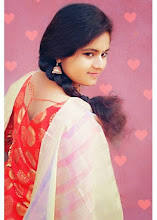According to the Hindu calendar, the festival of Holi is celebrated on the full moon day of Falgun, the last month of the year. It is said that it is one of the oldest festivals. The tradition and color of this festival has been changing every time. Come let's know its history.
1. Prahlad Katha: Many stories are associated with the festival of Holi. The most famous of these is the story of Prahlad. Prahlad's father Hiranyakashipu tried to kill Prahlad by burning him in a fire by sitting on his sister Holika's lap. Holika had a boon from Brahma that she would not be burnt by fire, but she got burnt and Prahlad was saved by the grace of Shri Hari Vishnu. Holika Dahan is done in memory of this incident. It is said that the devotee Prahlad was born in the golden age.
2. Kamadeva Story: On this day itself in Satyug, Shiva, after burning Kamdev to ashes, gave a boon to Lord Krishna for the birth of Kamadeva. That is why Holi is also called 'Vasant Mahotsav' or 'Kama Festival'.
3. King Prithu Story: It is also said that on this day King Prithu killed the demonic Dhundi with fire by burning wood to save the children of the kingdom.
4. Beginning of Shri Krishna's Phag Utsav: At the beginning of Tretayuga, Vishnu worshiped Dhuli. Dhulendi is celebrated in its memory. The tradition of celebrating 'Rang Utsav' after Holika Dahan started from the time of Lord Krishna. Since then its name has become Fagwah, because it falls in the month of Phagun. Krishna had put color on Radha. Rang Panchami is celebrated in the memory of this. It was Shri Krishna who added color to the festival of Holi.
5. Holika of Aryans: Holi was known as Holika in ancient times and on this day Aryans used to perform Navatraishti Yagya. In this festival, there is a tradition of taking prasad from another named Holka after performing a havan. Holka means the other lying in the field which is half raw and half ripe. Probably that's why it would have been named Holika Utsav. Since ancient times, some part of the new crop has been first offered to the gods. This is evident from the fact that this festival has been celebrated since Vedic times.
On Phagun Shukla Purnima, Aryans start Agnihotra by offering barley earrings to the sacrifice, in rituals it has been named 'Yavagrayan' Yagya. In spring, the sun moves from Dakshinayana to Uttarayan, hence the festival of Holi is also called 'Gavantarambh'. The arrival of Holi is an indicator that now the fragrance of spring is going to spread all around.
According to the pre-Jamini Mimamsa-sutras (around 400–200 BCE), the initial word form of Holi was 'Holaka'. Jaimini states that it should be edited by all Aryans. It is known that this festival has been celebrated since 600 BC.
5. Records of Ramgarh: It has also been mentioned in a 300 year old inscription situated at Ramgarh place of Vindhya region. This proves that this festival was celebrated even 300 years before Christ.
6. Mention in other texts: The description of Holi is also found in Kathak Grihya Sutra and Katha Garhya Sutra. The mention of this festival is also found in ancient manuscripts and texts of Puranas like Narada Purana and Bhavishya Purana.
Devapala, the commentator on a sutra of the Kathak Grihya Sutra, has explained in this way: Hola Karma Vishesh: Saubhagyaya Streenam Prataranushthiyate. Tatra holake raka deity. That is, Holi is a special karma, which is performed for the good fortune of women. It has Raka (full moon) deity.
One Holka in.
7. One Holka in 7.20 Sports: Holika is one of the 20 sports prevalent all over India. According to Vatsyayana, people smear colors on each other with Shringa (cow's horn) and sprinkle fragrant powders (Abir-Gulal). It is mentioned in the Linga Purana that Phalgun Purnima is called Phalgunika, it is full of children's games and bestows wealth (opulence) to the people. In the Varaha Purana, it is called Patwas-vilasini (played with powder).
8. Holi celebrations in temples: Various idols or pictures related to Holi festival are found on the walls of ancient Indian temples. One such temple from the 16th century is in Hampi, the capital of Vijayanagara. The depiction of Holi festival is also found in the paintings of Ahmednagar of 16th century and paintings of Mewar. Evidence of celebrating Holi and Diwali is also found in the remains of the Indus Valley Civilization.
Hare Krishna
















BEAUTIFULLY WRITEEN AND NICELY PRESENTED. WAAAOOW
ReplyDeleteI ONLY KNEW ABOUT PRAHALAD KATHA
YOU ARE INDEED A GOOD WRITER KEEP WRITING